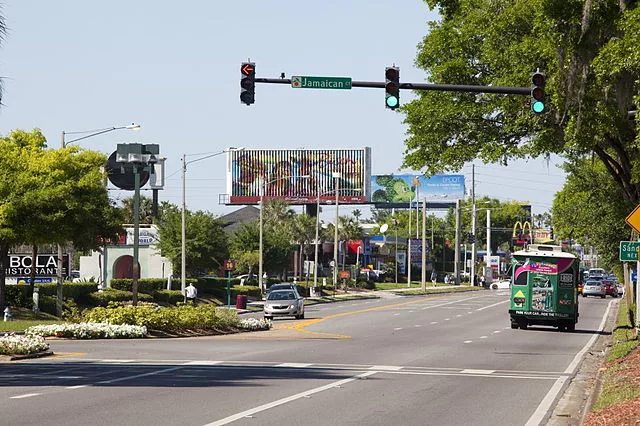
Orange County’s new traffic impact guidelines were adopted as a result of Ordinance 2023-11 and published in late February 2024. The guidelines introduce significant changes that go beyond the traditional concurrency analysis, especially for developments with more than 50 peak hour trips. The guidelines aim to provide a more comprehensive and standardized assessment of transportation impacts that go beyond the ability of the road network to accommodate new traffic.
Orange County’s New Traffic Impact Guidelines
As of February 2024, developers and traffic engineers must adhere to Orange County’s STAMP (Specific Transportation Analysis Methodology Plan) Guidelines to conduct their traffic impact analyses on all developments with more than 5 peak hour trips. These guidelines go beyond the traditional concurrency analysis by incorporating a broader perspective and more standardized methodologies.
Key Features of STAMP
- Operational Analyses at Intersections: Traffic operations at nearby intersections must now be analyzed for developments expected to to generate more than fifty (50) net PM peak hour vehicle trips.
- Expanded Study Area: STAMP requires developers to analyze impacts beyond the immediate project vicinity, considering segments and intersections up to 2.5 miles away from the development.
- Pass-by Trip Adjustments are Standardized: Recognizing that not all vehicle trips entering a property directly impact surrounding roadways, STAMP specifies pass-by trip reductions for certain land uses.
- Multimodal Transportation Evaluation: STAMP emphasizes the evaluation of multimodal facilities, such as sidewalks, bike lanes, and transit stops. By promoting transportation outside of private vehicles, project impacts on congestion can be mitigated.
- Data-Driven Growth Rate Projections: STAMP utilizes historical data and transportation model projections to determine growth rates for road segments. This data-driven approach ensures accurate mitigation planning and fair distribution of costs.
Key Features of STAMP
- Precise Impact Assessment: The expanded study area and pass-by trip adjustments result in more precise traffic impact projections, enabling informed decision-making.
- Fair Mitigation: Data-driven growth rate projections ensure that developers contribute proportionate mitigation costs based on historical traffic growth, although a minimum 2% per year rate applies.
- Multimodal Transportation Promotion: STAMP’s focus on multimodal facilities encourages developers to consider alternative transportation options, reducing vehicle dependency and improving overall accessibility to their site.
- Alignment with County Goals: STAMP aligns with Orange County’s Comprehensive Plan, which prioritizes sustainable transportation, smart growth, and traffic congestion mitigation.
STAMP Requirements for Your Project
Quickly determine the traffic analysis needs for your Orange County development project. Answer these two basic questions to get a quick overview of the necessary steps and ensure compliance with STAMP. This tool will help you understand the level of traffic study required based on your project’s size and stage of development, in accordance with STAMP’s Table 1 (February 27, 2024 edition).
Conclusion
Orange County’s new STAMP guidelines represent a significant advancement in traffic impact analysis, providing developers and traffic engineers with a clear framework to conduct comprehensive and accurate assessments. By applying these guidelines, developers and traffic engineers can contribute to Orange County’s vision of a sustainable transportation system that meets the needs of our growing community.
Let us support you
Reach out to us for expert guidance and support in navigating Orange County’s STAMP Guidelines and conducting a comprehensive TIA for your development.